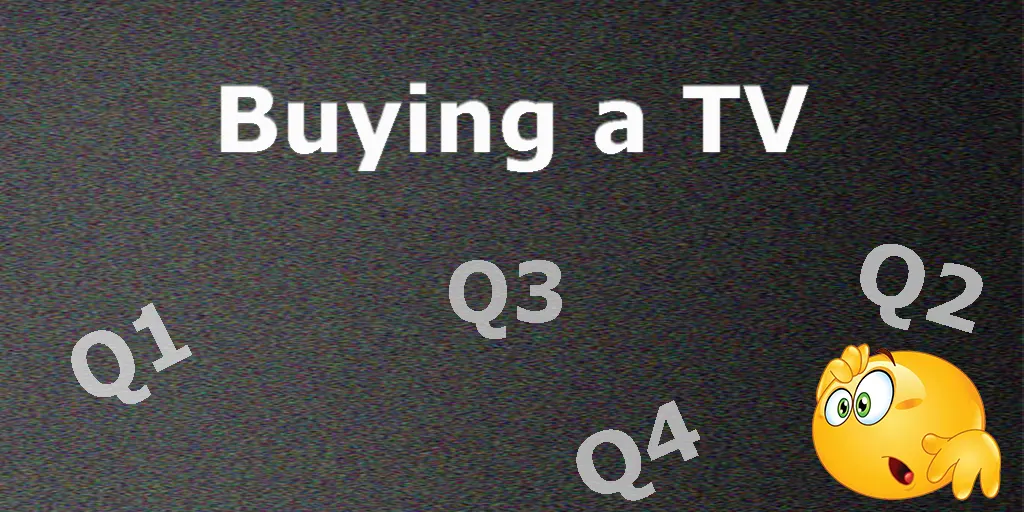After over ten years of observing and analyzing the television market, I’ve come to realize that pricing isn’t as closely tied to holidays and promotions as many people believe. While big events and sales certainly have their influence, the real driving force behind TV pricing is the product’s life cycle and the internal dynamics of the market. Understanding how this works is key to making a smart and cost-effective purchase.
TV Sales Cycle: Key Stages
The television market follows a predictable pattern. Each year, new models are released, and the previous ones begin to lose relevance. It all begins with the annual CES event in the first quarter, where the latest models are announced. This anticipation leads to a drop in demand for older TVs, which in turn causes prices to start falling. At the same time, the newest models haven’t hit the shelves yet, leaving the market temporarily in a kind of “pause.” It’s a transitional period with early markdowns, but not yet the deep discounts of a full clearance.
Strategic Navigation: 2024–2025 TV Pricing Patterns
Things shift in the second quarter when the current year’s models (in this case, 2025 TVs) go on sale. This is when prices are at their peak—retailers apply the highest markup because the products are brand new. Meanwhile, 2024 TVs officially become “last year’s models” and need to be cleared out quickly. For buyers who don’t need the latest tech, this is the first real opportunity to save big.
By the third quarter, prices of 2025 TVs begin to normalize, aligning more closely with actual market demand. At the same time, the remaining 2024 TVs are often sold at deep discounts as retailers prepare to restock for the upcoming cycle. In the fourth quarter of 2025, the focus shifts entirely to clearing out 2024 inventory. These TVs are still good, but soon they’ll be considered two years old, which drives retailers to push them aggressively with major discounts.
As the first quarter of 2026 arrives, the cycle starts over again. CES sets the tone, new models are teased or announced, and the market shifts its attention to what’s next.
Strategic Shopping: Taking Advantage of Retail Promotions
In addition to understanding the yearly cycle, it’s important to take advantage of key shopping events. Black Friday, Cyber Monday, end-of-year sales, and other seasonal promotions are golden opportunities. During these times, retailers analyze stock levels and may offer aggressive discounts, especially if certain models haven’t sold as expected or if warehouses are overstocked. In such cases, discounts can reach 30% or more—even on high-end models—depending on how urgently the retailer needs to move inventory.
When Is the Best Time to Buy a TV?
If you’re not set on having the latest model, the best time to buy a TV is in March. By then, previous-year models are heavily discounted, and new models haven’t yet taken over the shelves. It’s the perfect intersection of price and quality. For budget-conscious buyers who don’t need cutting-edge features, March offers the best overall value.
Should You See a TV in Person Before Buying?
Absolutely, yes. Even TVs with similar specifications can vary dramatically in picture quality. Today, you can’t rely solely on numbers or online reviews. I strongly recommend taking a flash drive with your own video clips—record a Full HD video and two 4K samples (at 60 fps and 120 fps). Ask the store staff to play them on the TV you’re considering. This will show you how well the TV handles upscaling, motion, and actual picture processing. It’s especially useful if you plan to use the TV for gaming, movies, or streaming content.
Beware of Misleading Advertising
Manufacturers don’t often lie outright in advertising, but they do stretch the truth or leave out key information. A common example is HDR support. Virtually every modern TV claims it, but not all of them deliver it in practice. For instance, many budget models use 8-bit panels with dithering. While the processor can technically handle HDR signals, the panel itself can’t display the full range of colors and brightness levels required for true HDR. So, although it’s listed in the specs, the experience will be a far cry from what you expect. On paper it supports HDR, but in reality, it only scratches the surface. That’s why it’s important not to take promotional claims at face value—seeing is believing.






